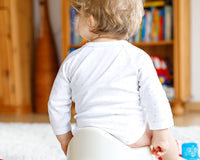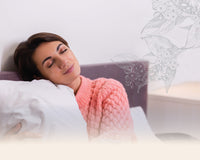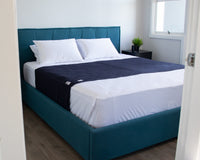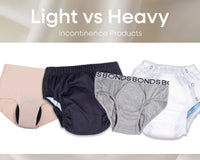Living with incontinence can be a challenge when you're keen on sports and workouts. But don't worry, you can still enjoy an active life with the right strategies and the right products. In this blog we will exploring various aspects of incontinence in sports providing you useful advice to keep you moving and feeling confident.
Understanding How Exercise Affects Incontinence
Physical activities can sometimes make incontinence worse. Exercises that involve a lot of impact, such as running or jumping, can increase pressure on your bladder and pelvic muscles, causing accidents. However, by choosing the right incontinence products that suit your needs, you can reduce the chances of accidents and maintain your fitness routine.
Remember to always choose the best exercises that adapt to you and your circumstances. Don’t let incontinence stop you from staying active and healthy!
The Importance of a Healthy and strong Pelvic Floor
Having a strong pelvic floor is very important for dealing with bladder leaks. These muscles hold up the bladder and other parts inside the pelvis, which helps you control when you pee. Doing exercises for the pelvic floor, like Kegel exercises, every day can really help you have better control and feel less worried about leaks. If you do these exercises often, your pelvic floor will get stronger and better at handling things, so you can feel more sure of yourself when you play sports.
The Impact of Incontinence on Different Sports
Incontinence can impact people in different ways based on the sport they play. For example, sports with quick movements or strong lifting, like basketball or weightlifting, might increase the chance of accidents. In contrast, gentle activities such as swimming, cycling, or yoga are usually easier to handle. Knowing how your sport influences your condition can help you choose and adjust your activities as needed.
Tips to Manage Incontinence During Exercise
- Prepare in Advance: Go to the bathroom before you begin exercising to lower the chance of accidents.
- Stay Hydrated: It's crucial to drink enough water, but don't drink too much just before you start exercising.
- Choose the Right Clothes: Pick clothes made of materials that pull moisture away from your skin and allow air to circulate, keeping you comfy and dry.
- Adjust Your Exercises: Change the way you do exercises to lessen the strain on your bladder. For instance, do exercises sitting down or lying down instead of standing up.
- Take Pauses: Give yourself time to rest and use the bathroom as necessary during your workout.
Selecting the right Incontinence Products for your Exercise
Choosing the right continence products can make a significant difference in your comfort and confidence while exercising. At Night N Day, we offer a variety of products with different absorbencies and styles to ensure you can maintain an active lifestyle.
-
Absorbent Pads: Anatomically shaped for both male and female anatomy, our pads provide comfortable and functional protection against light to moderate urinary incontinence leaks. These pads offer dependable protection, can be easily hidden under your exercise clothing, and are easy to remove and store.
-
Incontinence Pants: At Night N Day, you can find various pants such as Pull-Up All-In-One Pant, Plus; Pull-Up All-In-One Pant, Plus; and Double Incontinence Brief, 400ml. These pants provide extra support and protection during physical activities. Although they may be a bit bulkier than regular underwear, you will experience longer-lasting protection. For a less bulky option, our Night N Day and Bonds range offers the same technology as the absorbent pads but sewn-in (non-removable) to look and feel like normal underwear.
-
Swimwear: Our special incontinence swimwear lets you swim without concern about leaks. Designed for men, women, and children, our swimwear is the only product specifically designed to hold and containboth urinary and faecal leaks.
Adapt the exercises and sport to your needs and circumstances.
If intense sports are difficult for you, try these easier exercises and activities that are kind to your pelvic area:
- Swimming: The buoyancy of water reduces pressure on the bladder and pelvic floor area, so it's a great gentle exercise.
- Walking and Hiking: These are good for your heart and lungs without the hard impact of running or jumping.
- Cycling: Riding a bike, either indoors or outside, gives you a good workout without much pressure on your pelvic area.
Incontinence doesn't have to stop you from living an active life. By knowing how incontinence and exercise are connected, making your pelvic floor stronger, picking the right sports, and using the right products to manage incontinence, you can take part in different physical activities with confidence. Keep in mind that everyone's experience is different, so find the best product for you and keep up with a healthy, active lifestyle.















